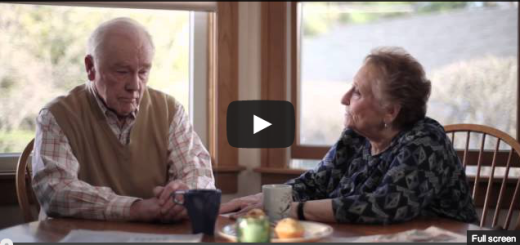“Finding the right home was a challenge.” – One Caregiver’s Experience
We’re half way through National Caregivers Month and there’s so much more to share! As you probably know by now, we are covering a different caregiving topic each week in November in celebration of National Caregivers Month. This week we are talking about the difficult topic of whether or not to move a loved one. Today, I want you to meet Phuong Quach who recently made this decision along with her family. Here is her story in her own words:
 At 56 years old, my mother was diagnosed with early on-set Alzheimer’s disease. Determining who should care for her was never a question. As her four children, we would all do it together. Our mom is sick, and therefore, we all need to do whatever we can – even if it meant personal sacrifices on our own lives – to insure she would have the best possible care. This is how my family dealt with crisis. It wasn’t about our own individual needs, but what we needed to do to take care of a family problem. And, it was a demonstration of our love and commitment to her.
At 56 years old, my mother was diagnosed with early on-set Alzheimer’s disease. Determining who should care for her was never a question. As her four children, we would all do it together. Our mom is sick, and therefore, we all need to do whatever we can – even if it meant personal sacrifices on our own lives – to insure she would have the best possible care. This is how my family dealt with crisis. It wasn’t about our own individual needs, but what we needed to do to take care of a family problem. And, it was a demonstration of our love and commitment to her.
It was 2005, and we were all young adults, living independently, and spread across the globe. The decision to all relocate to the bay area and significantly change our lives was not easy. None of us had any experience with Alzheimer’s or caregiving. And, after years of living apart, we had to learn how to live together once again, under one roof and heavily dependent on each other to really make this work.
The next four years was a huge challenge – juggling schedules, managing medication, preparing meals, providing daily exercise, going to doctor appointments, financially pooling resources, – the list goes on and on.
Over time, I developed feelings of frustration, resentment, guilt, obligation, and complete exhaustion.
At the same time, mom was declining fast. She went through two minor strokes and soon after, lost her ability to walk up and down stairs. Shortly after that, we noticed she was no longer able to complete full sentences. It became an increasing challenge to shower her, take her to the bathroom, or to have her do anything without close assistance. She became difficult to manage, often hitting because she didn’t know how to verbally express her own frustrations.
As we needed to provide mom with more care, we were not taking care proper care of ourselves. I noticed my own health declining. I wasn’t exercising or eating right. I found myself waking up really early with worries and I felt really stuck in the situation.
I didn’t quite know it at the time, but I had all the classic symptoms of “burnt out”.
In 2009, we moved her into an assisted living home. This was not entirely based on mom’s needs, but it was also about our own needs. Much had changed since 2005, and the journey ahead was still long. We needed to figure out how to shift the situation to make this work in the long term.
Finding the right home was a challenge. She has moved about three times since her first assisted living home. Mom is now in a wheelchair all the time. She needs to be spoon-fed and is on a new pureed diet. It requires two people to shower her and get her out of bed. She is no longer able to verbally communicate.
Our role as caregivers has not gone away. Mom is still visited by one of her four children almost every day.
I now live on my own and feel healthier again. I continue to do something for mom’s care everyday -talk with her doctor or physical therapist, coordinate visiting schedules with my siblings, advocate for the quality care we believe she deserves, pay her bills, etc”¦ But now I am also able to do something for myself everyday too. And because of that, I am a better daughter and caregiver.
Don’t forget to share your experiences here, on our Facebook page or at www.alz.org/nadam. We want to hear from you!

















